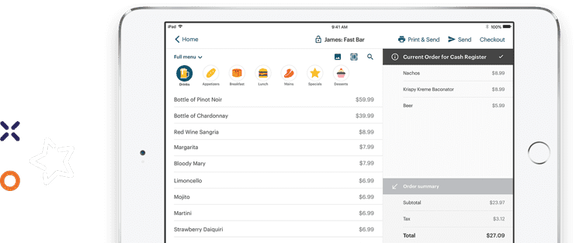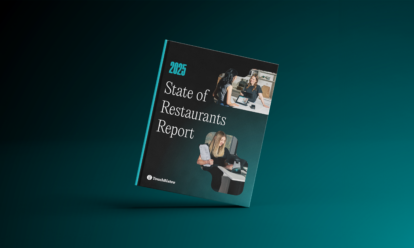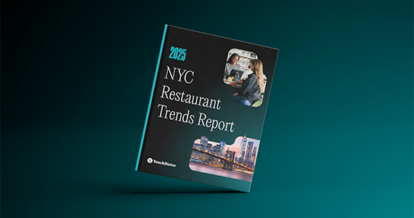Across the U.S. and around the world, restaurants and bars have either pivoted to takeout only or ramped up this part of their business in an effort to keep operations going while they follow new dining restrictions. If you’re looking to do the same, make sure you set yourself up for success: start with a new takeout menu.
Despite the challenges involved in adapting a business model, takeout, delivery, and curbside pickup are giving many restaurants the best chance of survival. And many others rely on this takeout too – even in lockdown or quarantine. From the essential healthcare workers who need a quick lunch, to seniors who are unable to cook, the demand (and need) for restaurant fare never disappeared.
To meet this demand, restaurants are coming up with creative solutions to keep their kitchens going and their communities fed. For some, this means creating a takeout menu limited to just a few best-selling dishes. For others, staying open can involve anything from turning their venue into a grab-and-go store, to selling meal kits.
While these creative menu solutions aren’t an option for every restaurant, for those that are able to stay open, a limited COVID-19 restaurant menu can provide a valuable source of income during this crisis.
To help you make your own COVID food menu adjustments, this article will cover:
- How to create a temporary takeout menu
- Alternative menu solutions, beyond takeout and delivery
- Examples of how other restaurants are adjusting their menus
How to Create a Temporary Takeout Menu
Though cities and states imposed strict dining bans early on, most restaurants were allowed to continue offering takeout and delivery. As a result, one of the most common ways that restaurants dealt with the COVID-19 restrictions was to create temporary takeout menus.
While it doesn’t make financial sense for every restaurant to pivot to takeout, for some it may provide a vital form of revenue for the months ahead. In fact, early research from Seattle – one of the first U.S. cities impacted by COVID-19 – showed that to-go sales grew by more than 10%.
For restaurants that are able to pivot to takeout, we’ve compiled some helpful takeout menu tips, including examples of what other restaurants are doing.
You can also get started with online ordering right away with TouchBistro Online Ordering. Free for customers for the first 12 months, this tool lets diners order directly from your website and you keep 100% of the profits.
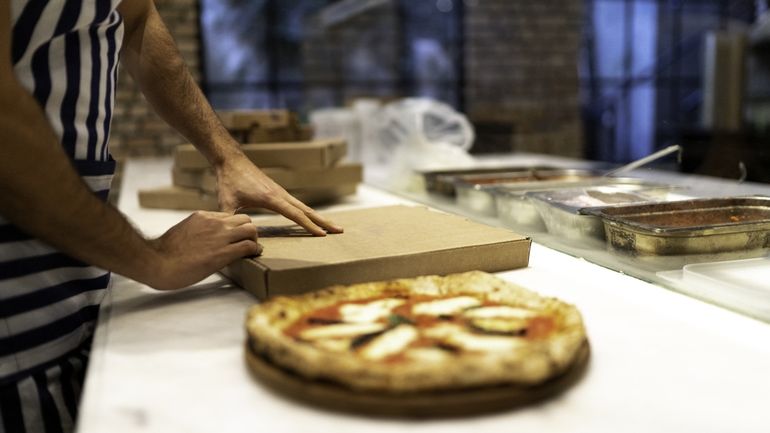
Shrink Your Menu
You’re probably well aware that you can’t (or shouldn’t) offer your restaurant’s full menu for takeout. On the one hand, cost is more important than ever before and a limited menu means saving money on ingredients and the utilities needed to cook those dishes.
For instance, the Pittsburgh-based restaurant Acorn recently abandoned its usual offerings to create a limited menu of to-go dishes. Instead of complex entrees such as spaghetti squash with smoked salmon and whole duck, Acorn’s new takeout menu is made up of sandwiches and easy-to-prepare side dishes like mac and cheese.
On the other hand, a pared-down menu is also necessary to reduce prep time. Many restaurants have been forced to make heart-breaking decisions about letting staff go, leaving them running with limited teams. With fewer staff on hand, the smaller the menu, the easier it is to manage takeout orders.
Remove Items That Don’t Travel Well
Part of creating a limited menu also involves removing dishes that don’t travel well. If your restaurant already offered to-go options before COVID-19, your takeout menu is probably already optimized for travel.
But for restaurants new to takeout, curating your takeout menu might involve a bit of trial and error. Think carefully about which items on your menu may go cold or soggy when placed in a takeout container for too long. For instance, French fries are notoriously hard to keep crisp.
Some decisions may also be based on the type of takeout containers you’re using. This is especially important as restaurants are increasingly turning to tamper-evident packaging to provide customers with peace of mind amidst heightened fears about food safety.
In the case of Brooklyn ramen restaurant Karazishi Botan, chef-owner Foo Kanegae created a takeout menu made up of dishes that travel especially well. Instead of his usual offerings of Inari Mochi and French Fries tossed with matcha salt, Foo created a pared-down menu that includes Tonkotsu Ramen, a Miso Botanical Ramen, and takeout-friendly appetizers such as edamame and wings.
Remove Unpopular Items
If there’s a particular menu item that hasn’t been resonating with customers, now is the time to cut it. Regardless of the current economic situation, poor-selling menu items eat into your bottom line. Eliminating these unpopular choices can save you precious time and money.
It’s also worth noting that certain items that may have sold well in your restaurant, may not be as popular as takeout options. COVID-19 has fuelled the sale of comfort food at grocery stores and some restaurants may notice a similar trend. Pay attention to what types of items customers are buying or even solicit direct feedback so you can eliminate poor performers quickly.
For the Augusta, Maine restaurant, State Lunch, early takeout and delivery orders made clear that comfort foods like mac and cheese and other pasta dishes were in high demand. The restaurant quickly trimmed its menu and shifted focus to its heartiest and most popular offerings.
Put Product Development On Hold
Without the rush of packed dining rooms, it can be tempting to use this downtime for product development, but experts warn against this. As Joe Pawlak, managing principal with Restaurant Business’ sister company Technomic, explains, “It’s not the time to think about LTOs and new product development. They don’t have the runway. Do what you’re known for and ride that pony until this thing subsides.”
This is a lesson that Sqirl in Los Angeles has taken to heart. The restaurant’s Famed Ricotta Toast enjoys near cult-like status, and in the wake of recent dining restrictions, Sqirl has doubled down on its Instagram-worthy toast for takeout and delivery.
For Michelin-starred tasting room Komi, pivoting to takeout has meant going back to basics. While the highly innovative restaurant normally serves up a $165 prix fixe of Greek and Mediterranean dishes, this has been paused in the wake of COVID-19 restrictions. Instead, Komi has rebooted a popular vegetarian dinner pop-up called Happy Gyro that includes $13 takeout pitas full of tofu skins.
Prepare for Supply Chain Disruptions
While you have control over a lot of the changes to your menus, you can’t control the supply chain. Though the situation differs across the country, the CEO of the International Foodservice Distributors Association has warned that foodservice distributors are experiencing extreme financial hardship, due in part to labor shortages. If there is a disruption to foodservice distributors – or worse, food producers – this could complicate your restaurant’s efforts to offer takeout.
Some restaurants abroad are already feeling the pinch when it comes to certain ingredients. English restaurant Bar Aldo has begun making fresh pasta and bread in-house because its regular pasta suppliers have been unable to keep up with the surging demand from retailers and other restaurants.
Even if many of your suppliers are still taking orders, you might not have enough cash on hand for the inventory. In this case, have a conversation with your suppliers about any outstanding bills or any orders that might need to be put on hold so you can adjust your menu accordingly. These can be tough conversations to have, but with everyone in the same boat, people are more likely to be understanding.
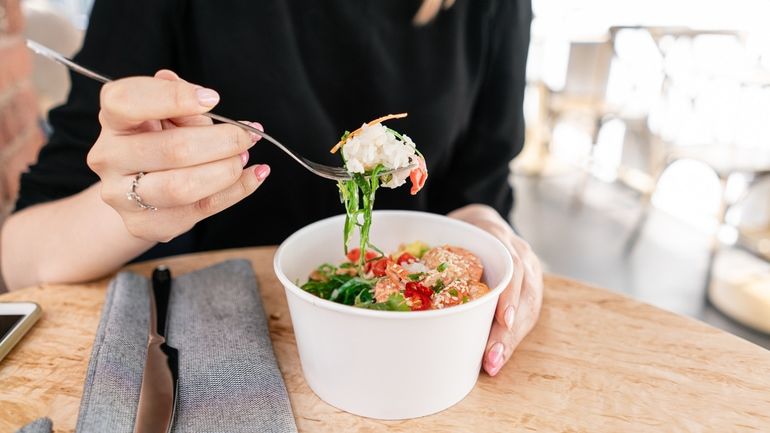
Other Ways to Adjust Your Restaurant Takeout Menu During COVID-19
Though many restaurants have been able to adjust their menus for takeout, not every restaurant has been able to follow suit. Faced with issues such as staff shortages and dwindling cash flow, some restaurants have turned to more innovative menu solutions.
Sell Pantry Staples
While restaurant sales have plummeted, grocery stores have seen record sales as consumers fill their cupboards in preparation for self-isolation. As retailers struggle to restock their shelves, many restaurants have attempted to fill the gap by transforming themselves into de facto general stores. That means scraping their regular menus and selling off individual ingredients to customers who are in immediate need of groceries.
In Portland, the popular fried chicken joint Yonder has created a special pantry menu “for pandemic preparedness.” Instead of the restaurant’s usual dishes, the new menu features ingredients that would normally not be available for purchase, such as quarts of chicken broth, loaves of bread, and cups of coffee creamer.
Similarly, the Midwestern QSR chain Frisch’s Big Boy has transformed 100 restaurants into makeshift corner stores – complete with drive-thru windows for quick pickup. These new Big Boy Markets sell perishables and fresh produce, as well as more shelf-stable items such as cereal, condiments, and even toilet paper.
Sell Off Luxury Goods
Selling pantry staples such as milk and bread can be a great way to keep the community fed in uncertain times, but what about luxury goods?
For many fine dining restaurants, there’s little demand for them to turn their restaurants into high-end grocery stores. Instead, many are offering steep discounts on their remaining inventory to recoup a small portion of their costs.
This is the approach taken by New York City restaurant Huertas. Before shutting down completely, the Spanish restaurant sold off imported cans of fish, Manchego cheese, almonds, chorizo, and more, as part of a major “provisions sale.” The money brought in from these sales was then donated to the restaurant’s team.
In Chicago, Weber Grill has taken a more creative approach to selling off its premium cuts of meat. The restaurant has begun offering high-end grill packs of New York strip steaks, filet mignon steaks, and angus beef burgers.
Create Family Meals
For some restaurants, pivoting to takeout and delivery is not nearly enough to fill the gap. To increase the size of orders coming in, they’ve shifted their efforts to feeding entire families, rather than individuals. This means adjusting their menu from single-serving dishes, to family-size meals that can feed four or five people at a time.
In Chicago, The Publican is catering to families with its “Greatest Hits” menu. Described as “dinner for four, from our family to yours,” the restaurant is serving up best-sellers such as a whole chicken with summer sausage, barbequed carrots, and an assortment of gourmet cookies.
Discount Kids Meals
In some cases, adjusting restaurant menus for families, also means adding or expanding options for kids. For many families, school closures mean that the children who depend on school lunch programs may not be getting enough food each day. To fill that gap, a number of restaurants are changing their menus to offer free or discounted meal options for kids.
Though chain restaurants have received the greatest attention for offering discount kids meals, many independent restaurants are making similar menu adjustments. In Smyrna, Delaware, Brick Works Brewing and Eats unveiled a limited takeout menu that includes free kids meals to school-aged children in need. The restaurant’s kids meals include options like grilled cheese sandwiches and quesadillas with a drink and side dish included.
Create Meal Kits
With many restaurants operating on skeleton crews, there may not be enough staff on hand to prepare and cook entire meals. To combat this issue, some restaurants have begun deconstructing their menus and repackaging the raw ingredients as meal kits. These kits can then be cooked by customers at home, allowing restaurants to eliminate the time and cost of cooking full meals in-house.
One restaurant that has adopted this approach is Austin’s Peached Tortilla. In the wake of COVID-19, founder Eric Silverstein quickly pivoted from hot food to family-size meal kits, complete with easy-to-follow instructions. All the meals are reheatable and involve virtually zero cooking, making them a quick and easy option for families.
Other restaurants have also positioned their meal kits as an interactive cooking experience for families. For example, Toronto’s General Assembly Pizza created family-friendly pizza kits that include individual containers of dough, sauce, cheese, and toppings. The brand even promoted the pizza kits as “so easy a kid could make it” – music to the ears of homebound parents.
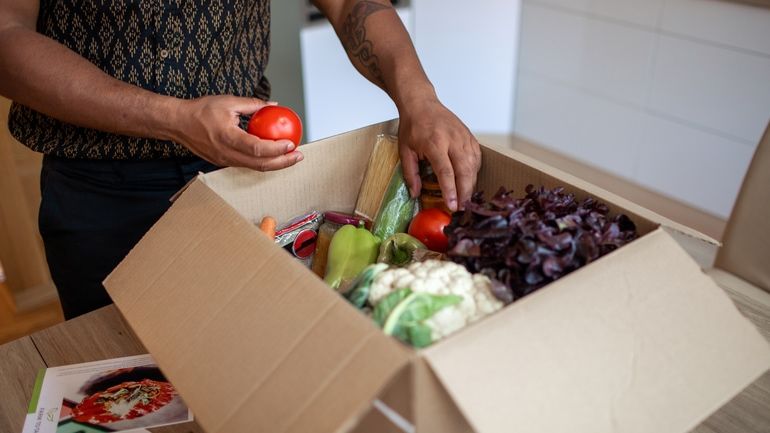
Consolidate Inventory
For restaurant groups, the costs of keeping several venues open and managing multiple menus may not be an option amidst COVID-19 dining restrictions. To keep costs at a minimum, some have chosen to consolidate their inventory and adjust their menu based on what they have on hand.
In Houston, Clark Cooper Concepts announced that it would temporarily consolidate all of its restaurants into Coppa Osteria. With a larger inventory to draw from, the consolidated Coppa Osteria is now serving a few specials from other concepts, such as The Dunlavy and Brasserie 19. Coppa Osteria is also offering wine inventory from each of its concepts to generate additional cash flow.
Sell Alcohol (If You Can)
As many restaurants have realized, adjusting their menu for delivery-only dining also includes figuring out what to do with their alcohol inventory. With many states beginning to loosen their alcohol delivery laws, restaurants have sought out creative ways to sell off the alcohol that normally accounts for 20% to 30% of restaurant sales.
For instance, Austin’s Jacoby’s restaurant created a special cocktail kits menu for curbside pickup and delivery. Each kit includes bottled booze, juices, and garnishes so customers can recreate their favorite cocktails at home.
Donate to Those in Need
In spite of these creative menu solutions, some restaurants are unable to stay open in any capacity – even with a limited menu. Instead of letting their food go to waste, these restaurants have looked for ways to give back to their staff and their communities.
Prior to shutting down her Detroit restaurant The Block, restaurateur Stephanie Byrd donated much of her remaining inventory to staff to help ease the transition to unemployment. After helping her staff stock their cupboards, Byrd and a number of other Detroit restaurateurs then teamed up to donate their remaining food to a local homeless shelter.
With such an unprecedented situation before restaurant owners, it’s clear there’s no one way to respond to COVID-19. While takeout menus and other adjustments are helping some restaurants stay afloat, others have chosen to abstain entirely and put their operations on pause. All you can do is take stock of what options are most relevant to your restaurant and make the best decision for your business, your staff, and your customers.
For more menu tips, check out this handy resource hub from MustHaveMenus. And for more COVID-19 resources for restaurants, visit our Restaurant Recovery Navigator.
Looking for something specific? Contact our resource team directly at [email protected] to share any topics you’d like us to cover.


